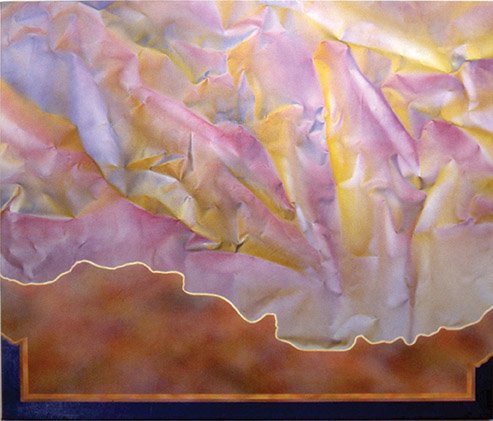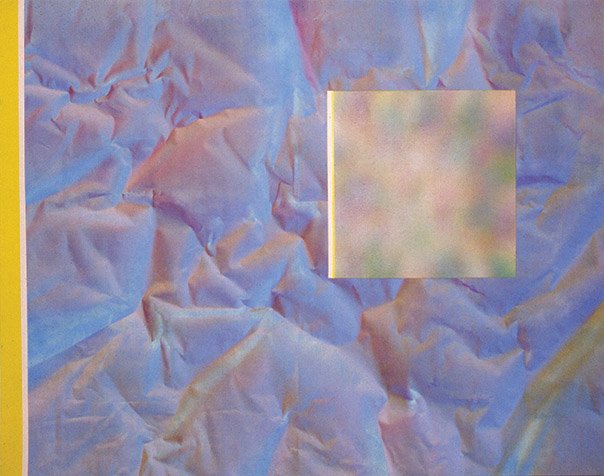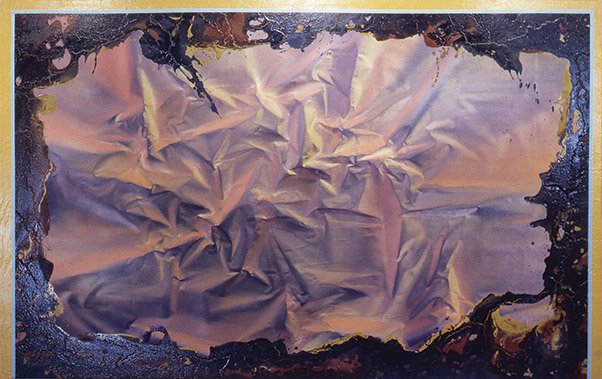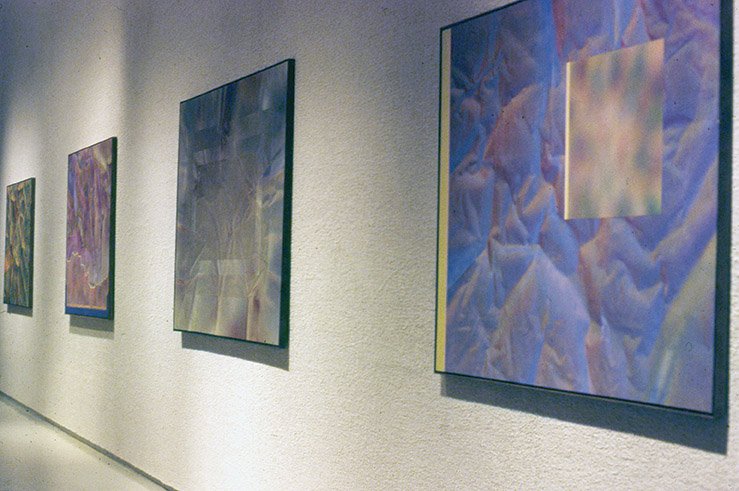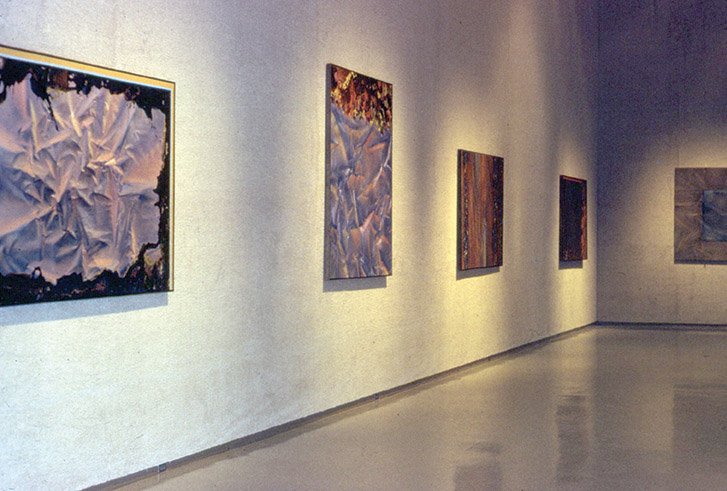Route 44 - A Journey, Chapter 4
Chapter 4
Since I thought it would be possible for me to get a MFA degree in one year from OU and was pretty sure I would be accepted into the program, I didn’t bother to apply anywhere else. Both assumptions were very naïve. As it turned out I did get admitted, barely, into the program. I found out later that the faculty tried a new method of selecting their new graduate students. In previous years each faculty member chose the students for their area, i.e. the painting faculty chose the painting students, sculpture faculty chose sculpture students, etc. This year the entire faculty unanimously voted to accept or deny each student. This proved to be almost disastrous for the program, there were only two graduates accepted for the fall 1972 enrollment. Normally, 12 to 15 students would be accepted. So, I began that summer, enrolling in 12 graduate hours. Armed with my new “wrinkle technique” I started working with a goal of 15 – 20 new pieces during the summer. At that time the graduate curriculum was very loose at OU. They had several graduate level studio classes that you could take multiple times with a maximum of 12 total hours in each class. I enrolled in 4 of the classes for 3 hours each with a different professor for each class. You met with each of your professors once a week for critique and just worked. There were no set assignments or projects unless one of your professors asked you to work on something specific. The idea was that you were a working professional and you would work to produce and improve your craft. A simple process that many students had great difficulty adapting to but I loved it. I started doing smaller color studies on paper. These works were full watercolor paper size (22”x30”) and I primarily worked on color and different paper folds. They were quick and I could easily do one or more a day. I was using an airbrush to apply the paint so I was using a variety of airbrush media. I experimented with colored inks and dyes as well as watercolor and acrylic. Tube paints needed to be thinned to a very thin consistency so even the opaque paints became somewhat transparent. This transparency aided in the color palette by multiplying the color with each application. These paper studies were important in the development of the larger works on canvas. It was a great way to perfect and work out problems with spraying and the application of paint. They also quickly led me to push beyond the natural phenomenon of the wrinkle. I started trying all kinds of fold and wrinkle patterns. Everything from ridged grid patterns to deep complex wrinkles and everything in between. Then I experimented with masked areas and over-painting hard edged elements, this led to pouring thick paint over the flat wrinkle illusion to drastically juxtapose the two textures. That summer was very productive, I finished with about 30 watercolors and about 6 large-scale canvases. It was the first time that I had the time and freedom to just work. It was exciting! That summer the school allowed me to set up a temporary studio in the brand new Fred Jones Memorial Art Center. Even though it was temporary it was great because it was a new state of the art facility with plenty of space and all the necessary technology (compressed air) to explore this new technique of painting. All in all it was a very successful summer and I assumed my professors felt the same way because I received all A’s. The first hurdle of my one-year marathon had been successfully completed.e dreaded “helicopter parent.”
“Wrinkle, Pour and Magenta Grid” / Acrylic / 57″x84″
“Yellow Window” / Acrylic / 66″x90″
“Here It Comes” / Acrylic / 66″x84″
“Thin Gold Line” / Acrylic / 60″x72″
“Looking In” / Acrylic / 66″x96″
“Looking Out” / Acrylic / 72″x72″
“Arc Wrinkle” / Acrylic / 72″x72″
In the fall I had to move my studio. The University had several old buildings on what was called North Base. North Base was an old Naval facility that dated back to the WWII time period. I know what you are wondering, a Naval Base in the middle of land locked Oklahoma? Well, it’s true; the story I was told was that the Navy used it as artillery training for the big guns on ships during the war. The buildings were mostly old frame barracks but there was one concrete building that was the bathhouse for the base swimming pool. There was space available in this building so that is where I moved. The sculptors seemed to be in the old barracks and the painters were in the bathhouse. I had met several of the graduate students a year earlier when I was a senior. I had become friends with a graduate printmaker named Dwight Pogue. He was working with commercial printing techniques and trying to use them in a fine art approach. I became very interested in these techniques and I helped him build a process camera out of found parts that we scrounged from the Government surplus that we had access to in Oklahoma City. We installed this camera in one of the barracks and eventually used it to shoot large-scale negatives and positives for screen-printing. We eventually wrote a book and printed it at Dwight’s dad’s printing company in Missouri but that is another story. Through these efforts I met many of Dwight’s fellow graduate students and friends. One of Dwight’s friends was a painter by the name of Otis Jones. Otis and Dwight had been friends as undergrad students at a small University in Pittsburg, Kansas. Otis also had a studio in the bathhouse and we became friends. Otis was very progressive in his painting. His paintings at the time were large arrangements of a wide variety of materials including thinly painted cheesecloth, natural muslin and raw and painted wood. These materials were assembled in a variety of arrangements on a long wall with some of the wooden elements giving dimensional support to the draped and flowing cloth elements. This visual style was almost radical for me at the time but was very interesting. The better I got to know Otis and the more I watched him work the more I realized how dedicated he was to this new art form. There were a lot of advantages to this method of working. One was cost of materials; one set of materials could be used over and over and over with almost unlimited variation possibilities. Another advantage was storage. Another close graduate friend, Dalton Maroney, recently told me of a time during this period when he helped Otis transport and install an entire show in Otis’s Volkswagen Beetle. The biggest disadvantage was this type of work had no real permanence. Almost none of this type work exists today; it lives by its photographic record. Otis, Dalton, Dwight and all of my graduate friends would become very important in my personal art development. I continued to work with the “wrinkle technique” but watching my fellow grad students work with arranged work in painting and sculpture accelerated my growth and my desire to go beyond the natural beauty of the wrinkle illusion. I worked with the wrinkle technique through my Mid-Way Show. For most of the graduates this show occurred after the first year when the student had finished approximately half of the required 56 hours. Since I was working on the accelerated plan, I scheduled mine after my first fall semester. I had successfully completed 28 hours at this point. The show was at the new Fred Jones Memorial Museum and consisted of eight large stretched canvases.
Grad School Midway Show / 1971 / Fred Jones Jr. Memorial Art Center
Grad School Midway Show / 1971 / Fred Jones Jr. Memorial Art Center
April 3, 2016 lhefner Art, Book Acrylic Painting, Fine Art, spray painting, Wrinkle Painting

